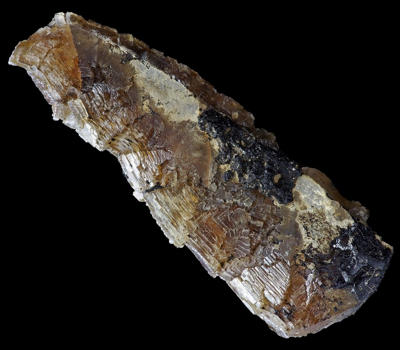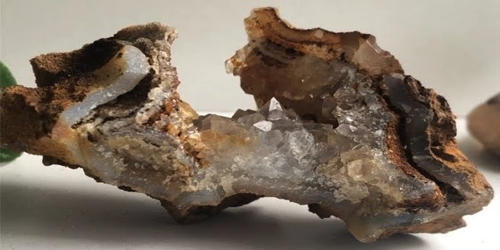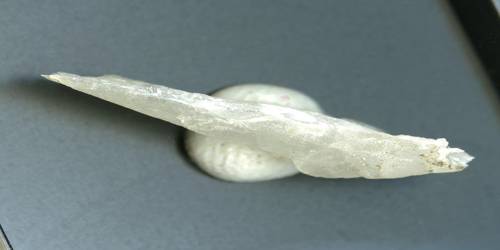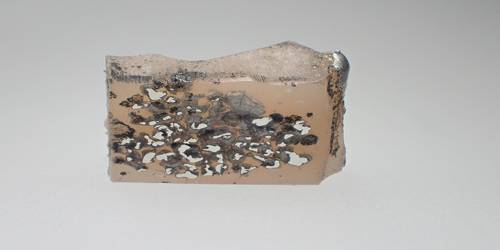Melanophlogite is a rare silicate mineral and a polymorph of silica (SiO2). It is a rare form of silica, and is in a unique class in that it contains organic compounds in its chemical structure. It has a zeolite-like porous structure which results in relatively low and not well-defined values of its density and refractive index. It is a form of silica with a clathrate structure containing organic impurities, which crystallizes in the tetragonal system and occurs as minute cubic crystals or thin crusts on sulfur.
Melanophlogite often overgrows crystals of sulfur or calcite and typically contains a few percents of organic and sulfur compounds. It is a tetragonal-ditetragonal dipyramidal mineral containing carbon, hydrogen, oxygen, silicon, and sulfur. Darkening of organics in melanophlogite upon heating is a possible origin of its name, which comes from the Greek for “black” and “to be burned”.
General Information
- Category: Silicate mineral
- Formula: (repeating unit) SiO2
- Crystal system: cubic or tetragonal
- Color: Brown, colorless, light yellow, dark reddish-brown.

Properties
Melanophlogite can be grown synthetically at low temperatures and elevated pressures (e.g. 160 °C and 60 bar). It is a tetragonal or cubic silica mineral with a gas-hydrate structure containing many large voids. Since many molecules form unstable guests, the symmetry of melanophlogite can change between cubic and tetragonal upon mild heating (<100 °C).
- Crystal habit: Forms crust-like aggregates on matrix
- Cleavage: None
- Fracture: Brittle
- Mohs scale hardness: 6.5–7
- Luster: Vitreous
- Streak: White
- Diaphaneity: Transparent to translucent
- Specific gravity: 1.99–2.11, average = 2.04
- Optical properties: Isotropic, n=1.425–1.457
History
Melanophlogite was identified and named by Arnold von Lasaulx in 1876 although G. Alessi had described a very similar mineral as early as in 1827. The mineral had a cubic crystal structure; chemical analysis revealed that it is mainly composed of SiO2, but also contains up to 12% of carbon and sulfur. The name was officially changed to melanophlogite in 1927.
Occurrences
Melanophlogite is a rare mineral that usually forms round drops or complex intertwined overgrowth structures over sulfur or calcite crystals. Rarely, it occurs as individual cubic crystallites a few millimeters in size. It is found in Parma, Torino, Caltanissetta, and Livorno provinces of Italy; also in several mines of California in the US, in Crimea (Ukraine) and Pardubice Region (Czech Republic). In a few deposits, such as the Case Montanini Quarry in Italy, the Melanophlogite has been pseudomorphed into Quartz or Opal.
Association: Sulfur, calcite, \opal,” cristobalite, quartz, dolomite, celestite, pyrite, marcasite, rhodochrosite, magnesite
Information Source:
















